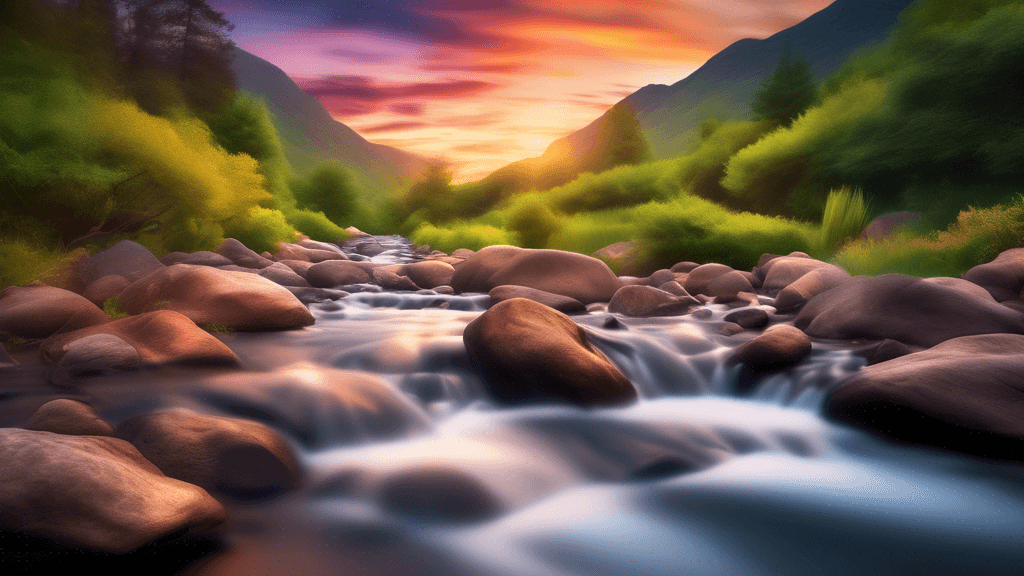
Mastering Long Exposure Photography: How to Capture Silky Water
Share
Understanding Long Exposure Photography
Long exposure photography is a technique that photographers use to create striking images by allowing more light to enter the camera over an extended period. This method captures elements in motion, such as water or clouds, with a smooth and often surreal effect. But, what does it take to master this technique, especially when your aim is to capture that mesmerizing silky water effect in rivers, waterfalls, or ocean waves?
Why Choose Long Exposure for Water Shots?
Before diving into the how, let's explore the why. Capturing water using long exposure techniques transforms the scene into something almost other-worldly. Moving water, when exposed long enough, turns into a smooth, flowing canvas, stripping away the chaos and leaving behind a serene and pure aesthetic. This makes long exposure not just a photographic technique but an artistic expression.
Key Benefits:
- Visual Appeal: Silky water effects can make your photos stand out, offering a serene quality that is often associated with fine art photography.
- Motion Blur: It helps to convey movement in a still photo, adding drama and a dynamic element to your compositions.
- Light Control: Longer exposures allow you to make the best use of available light, especially in low-light conditions at dawn or dusk.
Essential Gear for Long Exposure Water Photography
To get started with long exposure photography, particularly for silky water effects, here are some essential pieces of equipment you will need:
- Tripod: Stability is key in long exposure photography to avoid unwanted blur from camera shake.
- Camera: A DSLR or mirrorless camera that allows manual control of shutter speed, aperture, and ISO settings.
- Lens: Depending on your subject, a wide-angle lens is generally preferred for landscapes, while a telephoto lens can work well for isolating specific sections of water.
- Neutral Density (ND) Filter: This reduces the amount of light entering the lens, enabling longer exposure times without overexposing the shot.
- Remote Shutter Release: To further minimize camera shake and maintain sharpness in your photos.
Step-by-Step Guide to Capturing Silky Water
Setting Up Your Camera
To begin capturing those silky-smooth water shots, follow these structured steps:
- Step 1: Attach your camera to your tripod and set up near your water scene. Ensure the camera is stable and level.
- Step 2: Set your camera to manual mode. This gives you full control over the exposure settings.
- Step 3: Attach the ND filter to block excessive light, allowing for longer exposure times without overexposure.
- Step 4: Use a low ISO setting (such as ISO 100) to reduce noise in the final image.
- Step 5: Choose a narrow aperture (f/11 to f/16) to ensure the entire scene is in focus and to further extend the shutter speed.
- Step 6: Experiment with shutter speed. Start from 1 second and increase as needed to get that perfect motion blur in the water.
- Step 7: Use your remote shutter release to take the photo without touching the camera.
After taking the shot, review it on your camera's display. Check for focus and exposure. With digital photography, experimentation is key—adjust the settings and try different shutter speeds to see how it affects the motion blur of the water.
Advanced Tips and Considerations
With the basics in place, consider these tips to refine your long exposure water shots:
- Time of Day: Shooting during the golden hours of early morning or late afternoon can add beautiful colors and enhance the mood of your shots.
- Weather Conditions: Overcast days can be ideal for long exposure photography as the diffused light reduces the contrast and softens the scene.
- Composition: Pay attention to how the water flows through the frame. Use elements like rocks or logs as foreground interest to guide the viewer’s eye through the image.
Mastering long exposure photography to capture silky water requires patience and practice. Renowned photographer Michael Kenna once said, I often think of that rare fulfilling joy when I am in the presence of some wonderful alignment of events. Where the light, the color, the shapes, and the balance all come together in a singularly perfect moment that can never be recreated. My only regret is that too often I see it only when I am reviewing my photographs. This quote captures the essence of what makes long exposure photography, particularly of water, so profoundly rewarding.
Call to Action
If you're passionate about photography, art, and the environment, consider exploring long exposure photography. It does not just allow you to capture stunning, ethereal pictures, but also connects you deeply with the natural landscape. Start with the basics outlined, hone your skills through practice, and soon, you'll create mesmerizing portraits of nature's flow that are not just seen but felt. Don't forget, every photograph you take contributes to a greater appreciation and understanding of our natural world's beauty and intricacies.





